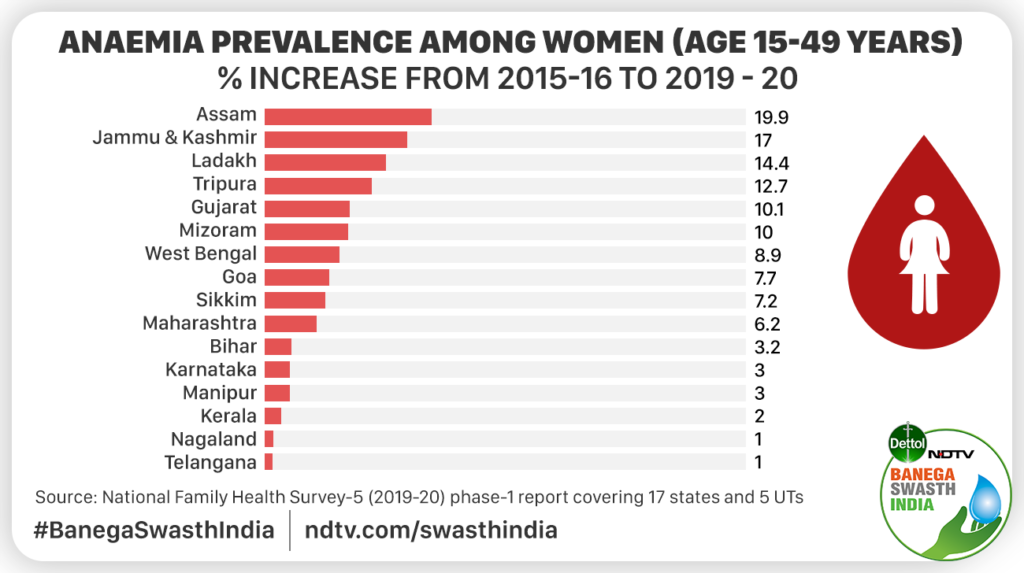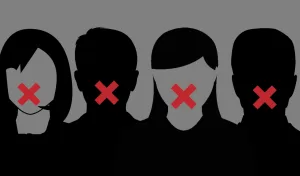❈ ❈ ❈
What NFHS-5 Tells Us About the Status of Nutrition in India
Editors
The Union health ministry released the second phase of India’s fifth National Family Health Survey (NFHS-5), conducted in 2019-2021, on November 24. The data for the previous round, NFHS-4, was released in 2015.
NFHS-5 is the most comprehensive survey to date on the health and nutrition indicators of India’s men, women and children.
Since India has the most malnourished children in the world, it’s worth analysing what NFHS-5 has to say about India’s progress towards achieving UN Sustainable Development Goal (SDG) 2.2: “ending all forms of malnutrition by 2030 for children under 5”.
Mortality rates
Infant and child mortality rates have improved since the previous round. The steepest fall has been recorded in the mortality rate of children under 5 – from 49.7 to 41.9 deaths per 1,000 live births.
Vaccination rates
Similarly, vaccination rates have improved since NFHS-4. The fraction of fully vaccinated children between the ages of 12 and 23 months has gone up from 62% to 76%, along with the rates of partial vaccination.
Interestingly, the fraction of children receiving most of their vaccines in public health facilities has also gone up, from 91% in NFHS-4 to 95% in NFHS-5, reflecting the improved coverage of the facilities.
Childhood diseases
‘Childhood diseases’ presents a more mixed picture. While the prevalence of diarrhoea in the two weeks preceding the survey dipped slightly in NFHS-5, the fraction of children receiving ORS and zinc for diarrhoea has gone up substantially.
Children’s access to healthcare services – when suffering from diarrhoea and symptoms of acute respiratory infection (ARI) – has remained almost the same since the previous survey. The latter is an important finding: despite COVID-19, the percentage of children suffering from ARI has not gone up.
Child-feeding practices
Children’s feeding practices have largely improved – except for the percentage of children younger than 3 years who were breastfed within an hour of birth, which remains unchanged from NFHS-4. The largest improvement is in the percentage of children who were exclusively breastfed when under six months – from 55% in NFHS-4 to 64% in NFHS-5.
Nutritional Status
The NFHS-5 data shows an increase in severe wasting in children under five – from 7.5% in 2015-16 to 7.7% in 2019-21. Wasting, or low weight compared to height, could be caused by prolonged weight loss and poor nutrition. Stunting, or children being shorter than normal for their age, improved slightly – from 38.4% in the previous survey to 35.5% now; percentage of children underweight (low weight-for-age) has also slightly gone down from 35.8% to 32.1%.
The more alarming thing is the 8 percentage points’ rise in the fraction of children suffering from anaemia – from 59% in NFHS-4 to 67% in NFHS-5. Anaemia is another indicator of poor nutrition levels.
Along with malnourishment, obesity has also risen in children aged less than five years – 3.4%, up from 2.1% in 2015-’16. This suggests that even if children do not go hungry, their diet consists of junk food and few micronutrients.
Anaemia and Obesity in Adults
Anaemia, has also risen among men and women aged 15-49 years. Over one in two women, or 57% of those surveyed, and one in four men were found anaemic. Anaemia, or low haemoglobin in blood, is caused by iron deficiency. It can cause fatigue and complications during pregnancy and reduces fitness levels overall. Women between the ages of 15 and 49 years reported a four per cent increase in incidence of anaemia, up from 53.1 per cent in 2015-16 to 57 per cent in 2019-21. Anaemia in men aged 15 to 49 years has gone up to 25% in 2019-21 from 22.7% in 2015-16.
Obesity has also risen among adults. The data shows 22.9% of the men and 24% of the women surveyed were obese, up from 18.9% and 20.6%, respectively, in 2015-’16. Obesity hampers lung function and lowers immunity, making it a risk factor for a range of health problems, including severe Covid-19 infection. According to Centre for Disease Control data, 30.2% of the Covid-19 hospitalisations in the United States in 2020 were necessary because obesity was a risk factor.
(This article has been compiled by us from two articles: “What NFHS-5 Tells Us About the Status of Child Nutrition in India”, by Payal Seth and Palakh Jain in ‘The Wire’; and “Wasting Children, Anaemic Women: National Family Health Survey Data Shows Troubling Reversals” by Tabassum Barnagarwala in ‘Scroll.in’; with additional data taken from “Anaemia in Women and Children on the Rise, Assam Fares Worst: NFHS-5”, by Taran Deol in ‘Down to Earth’.)
❈ ❈ ❈
What NFHS-5 Data Tells Us About Indian Women’s Use of Period Products
Karan Babbar
Gender inequality is deeply rooted in Indian society. India slipped from the 108th to the 112th position in the World Economic Forum’s Global Gender Gap Index in 2020. Women’s empowerment is one of the crucial factors for any nation to bridge gender inequality. The International Institute of Population Sciences, Mumbai, recently released major findings from the fifth National Family Health Survey (NFHS-5), including multiple indicators of women’s empowerment.
One such indicator is the proportion of women aged 15-24 years who use menstruation-related products – locally prepared napkins, sanitary napkins, tampons and menstrual cups – during their menstrual periods.
Not using period products could lead to poor health outcomes, including reproductive and urinary tract infections.
Figure 1 reports the percentage of women aged 15-24 years using period products in India’s states. Seventeen states and Union Territories (UTs) had 90% or more of their women using period products; in Puducherry and the Andaman and Nicobar Islands, the fraction was 99%.
Figure 1. Percentage of women using period products across states.
In contrast, seven states and UTs – Tripura, Chhattisgarh, Assam, Gujarat, Meghalaya, Madhya Pradesh and Bihar – had 70% or fewer of their women using period products. Bihar was the only state to report a figure lower than 60%.
(Extract. Karan Babbar is a PhD scholar in innovation and management in education at IIM Ahmedabad. Courtesy: The Wire.)




